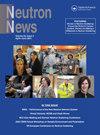Modeling of Flow Rate at Sukkur Barrage using Artificial Neural Networks (ANNs)
Q4 Physics and Astronomy
引用次数: 0
Abstract
Modeling of flow discharge plays a significant role in effective planning, sustainable usage, development, and management of water resources in short (hourly) and long-term (monthly) temporal categories. Since the inception of managing water resources, various techniques such as conceptual, metric, and physical models have been introduced all of these require a large amount of data, labor, and expense to be incorporated to obtain reliable results, due to which Artificial Intelligence methods were introduced that require less amount of data, time, expense and as well as experience to model flow discharge. In this research study, an attempt was made by employing two different artificial neural network techniques feedforward neural networks (FFNN), and time-lagged neural networks (TLNN) to model and predict the river flow discharge at daily and monthly timescale. 2010 and 503 no. of observations were used for model calibration and validation in daily time scale while 557 and 139 observations were used in monthly timescale. The result of the study revealed that the FFNN modeling approach has captured the daily and monthly stream flow variability very well than the TLNN model with R2 of 0.91 on the daily and 0.71 on the monthly time scale while R2 for the TLNN model was 0.79, and 0.34 for daily and monthly timescale. This indicates that the FFNN technique requires less no. of observations and is more reliable than TLNN and can be used to model river flow.苏库尔拦河坝流量的人工神经网络建模
流量建模在短期(小时)和长期(月)时间范畴的水资源有效规划、可持续利用、开发和管理中发挥着重要作用。自水资源管理开始以来,引入了各种技术,如概念、度量和物理模型,所有这些都需要大量的数据、劳动力和费用来获得可靠的结果,因此引入了人工智能方法,需要较少的数据、时间、费用和经验来模拟流量排放。本研究尝试采用前馈神经网络(FFNN)和时滞神经网络(TLNN)两种不同的人工神经网络技术,在日和月时间尺度上对河流流量进行建模和预测。2010和503号在日时间尺度上使用了8个观测值进行模型校正和验证,在月时间尺度上使用了557和139个观测值。研究结果表明,与TLNN模型相比,FFNN模型在日和月时间尺度上的R2分别为0.91和0.71,而TLNN模型在日和月时间尺度上的R2分别为0.79和0.34。这表明FFNN技术需要较少的no。它比TLNN更可靠,可以用来模拟河流流量。
本文章由计算机程序翻译,如有差异,请以英文原文为准。
求助全文
约1分钟内获得全文
求助全文
来源期刊

Neutron News
Physics and Astronomy-Nuclear and High Energy Physics
CiteScore
0.30
自引率
0.00%
发文量
36
 求助内容:
求助内容: 应助结果提醒方式:
应助结果提醒方式:


